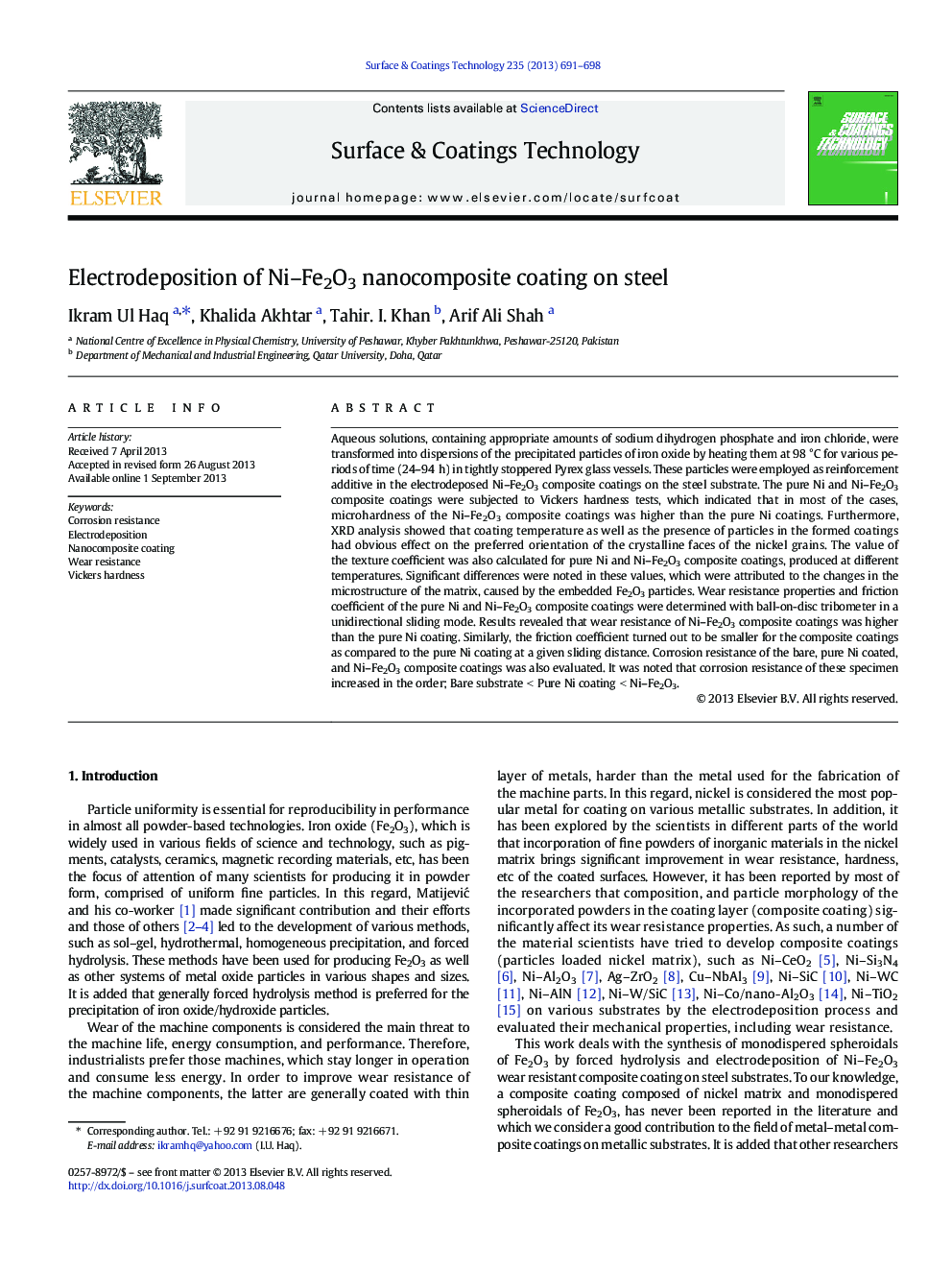| Article ID | Journal | Published Year | Pages | File Type |
|---|---|---|---|---|
| 8029365 | Surface and Coatings Technology | 2013 | 8 Pages |
Abstract
Aqueous solutions, containing appropriate amounts of sodium dihydrogen phosphate and iron chloride, were transformed into dispersions of the precipitated particles of iron oxide by heating them at 98 °C for various periods of time (24-94 h) in tightly stoppered Pyrex glass vessels. These particles were employed as reinforcement additive in the electrodeposed Ni-Fe2O3 composite coatings on the steel substrate. The pure Ni and Ni-Fe2O3 composite coatings were subjected to Vickers hardness tests, which indicated that in most of the cases, microhardness of the Ni-Fe2O3 composite coatings was higher than the pure Ni coatings. Furthermore, XRD analysis showed that coating temperature as well as the presence of particles in the formed coatings had obvious effect on the preferred orientation of the crystalline faces of the nickel grains. The value of the texture coefficient was also calculated for pure Ni and Ni-Fe2O3 composite coatings, produced at different temperatures. Significant differences were noted in these values, which were attributed to the changes in the microstructure of the matrix, caused by the embedded Fe2O3 particles. Wear resistance properties and friction coefficient of the pure Ni and Ni-Fe2O3 composite coatings were determined with ball-on-disc tribometer in a unidirectional sliding mode. Results revealed that wear resistance of Ni-Fe2O3 composite coatings was higher than the pure Ni coating. Similarly, the friction coefficient turned out to be smaller for the composite coatings as compared to the pure Ni coating at a given sliding distance. Corrosion resistance of the bare, pure Ni coated, and Ni-Fe2O3 composite coatings was also evaluated. It was noted that corrosion resistance of these specimen increased in the order; Bare substrate < Pure Ni coating < Ni-Fe2O3.
Related Topics
Physical Sciences and Engineering
Materials Science
Nanotechnology
Authors
Ikram Ul Haq, Khalida Akhtar, Tahir. I. Khan, Arif Ali Shah,
